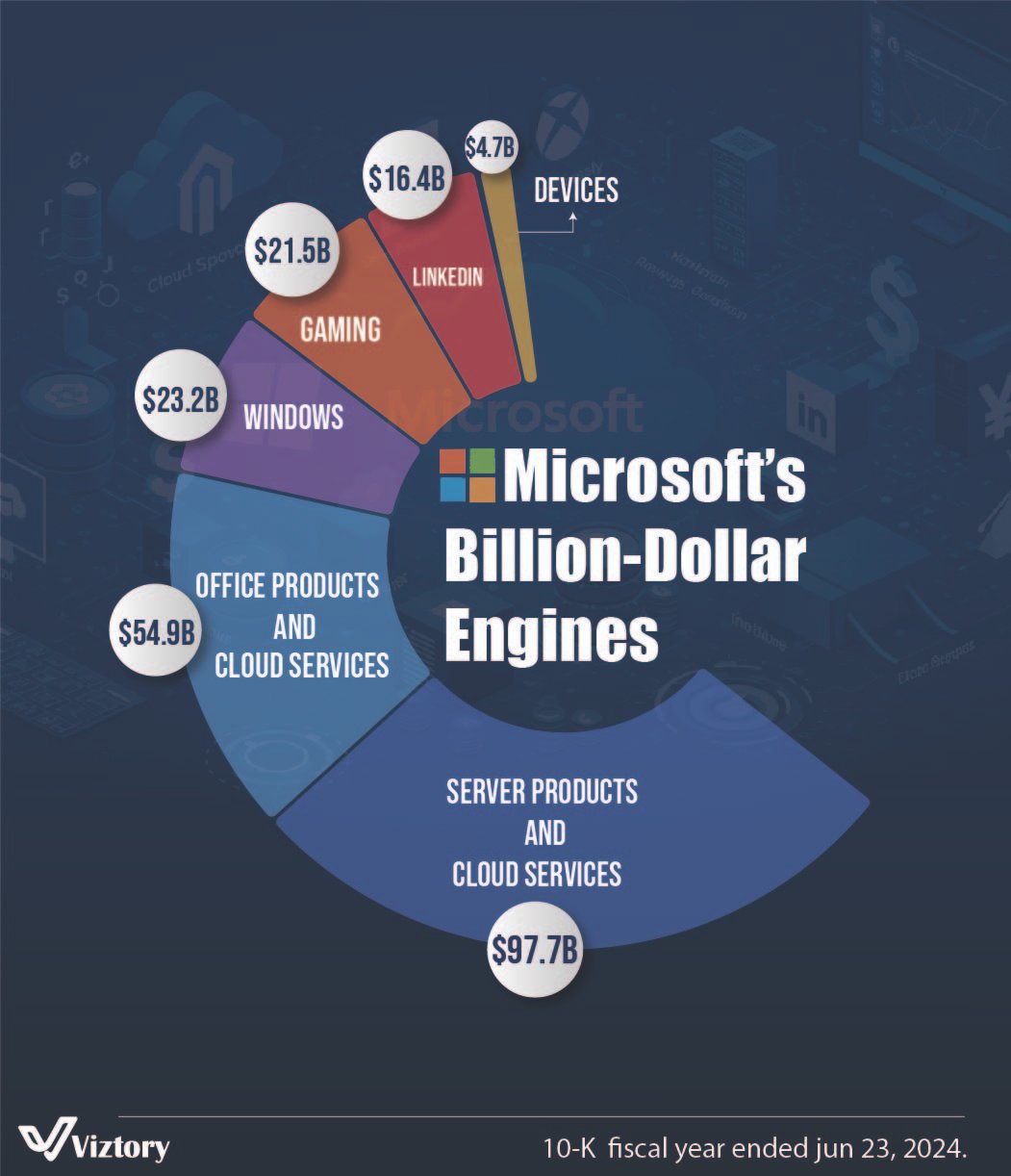Microsoft’s Billion-Dollar Engines
-
Jun, Sat, 2025
Additional Revenue Drivers
Windows – $23.2B
Despite a decline in consumer PC sales, Windows still contributes significantly. Its presence in business environments and OEM deals keeps this revenue stream stable.
Gaming – $21.5B
The gaming segment, fueled by Xbox consoles, Xbox Game Pass, and game studios acquisitions like Bethesda and Activision Blizzard, has matured into a major growth area. Microsoft’s focus on subscription models in gaming mirrors its approach to software.
LinkedIn – $16.4B
Microsoft’s acquisition of LinkedIn has paid off steadily. The platform’s value lies in advertising, premium subscriptions, and its deep integration into Microsoft’s enterprise tools.
Devices – $4.7B
Though smaller in comparison, this category includes Surface devices and other hardware. While not core to revenue, these products showcase Microsoft’s ability to blend hardware with software innovation.
Business Strategy and Interpretation
Diversification and Cloud-First Philosophy
Microsoft’s revenue structure clearly demonstrates a successful diversification away from legacy software toward high-margin, scalable services. The dominance of cloud and subscription services shows a strong alignment with the industry’s future direction.
Ecosystem Integration
From LinkedIn’s integration with Outlook to Microsoft Teams embedded in Office, Microsoft has built a deeply interconnected environment. This creates a high switching cost for users and drives long-term engagement across products.
Data Monetization and AI Readiness
The size and nature of Microsoft’s cloud and enterprise products give it access to large volumes of enterprise data. This puts the company in a strong position to lead in artificial intelligence development, especially through Azure OpenAI integrations.
Final Thoughts
The image above reveals more than just revenue figures—it reflects the core of Microsoft’s business philosophy: resilience through technological leadership, scalability through cloud platforms, and user retention through ecosystem integration.
In conclusion, Microsoft’s billion-dollar engines are not simply the result of legacy dominance; they are the outcome of a company that continuously reinvents itself while staying anchored in long-term, sustainable technology solutions. With innovation in cloud, productivity, gaming, and data-driven tools, Microsoft has built an architecture for continued dominance in the digital age.

